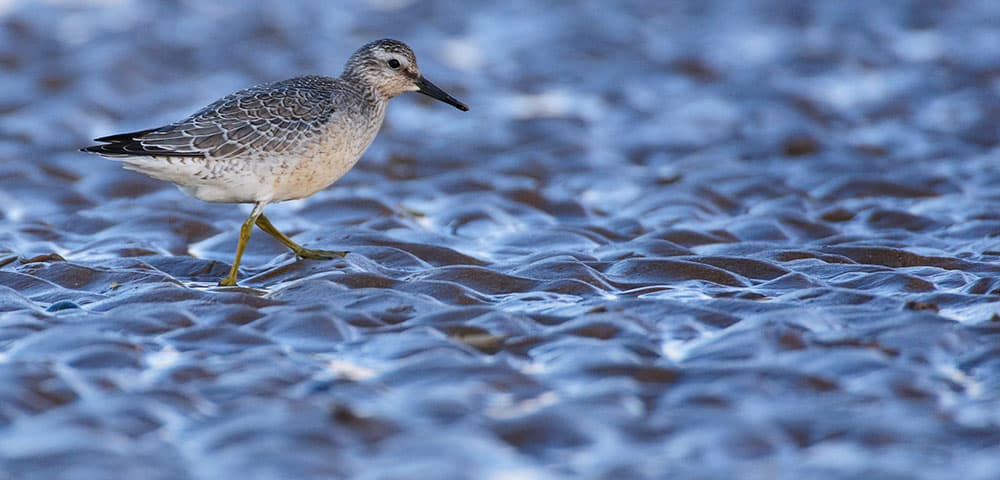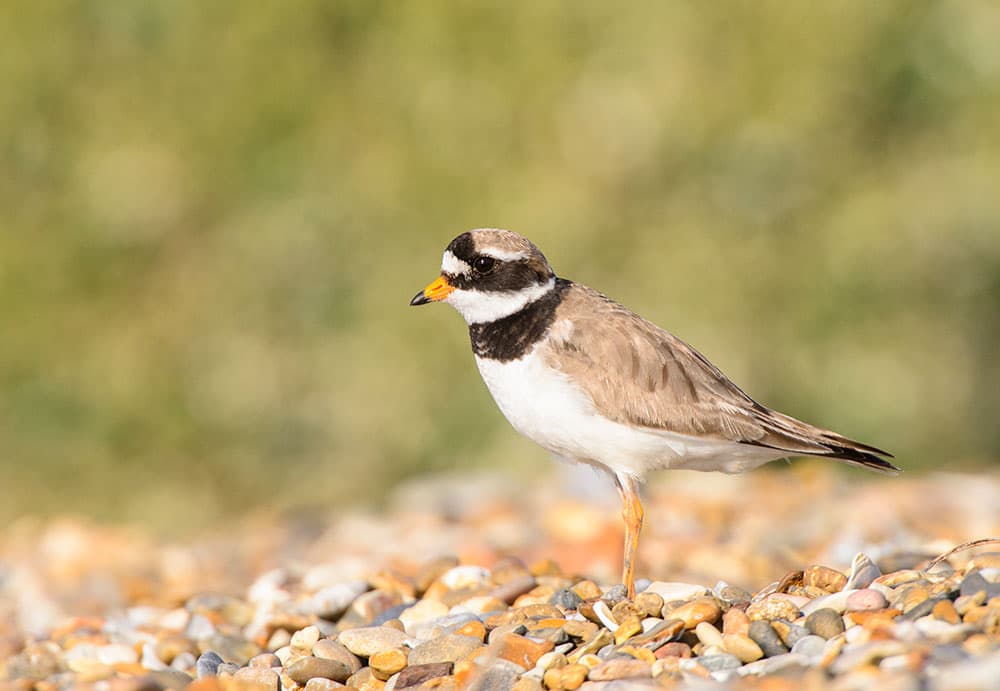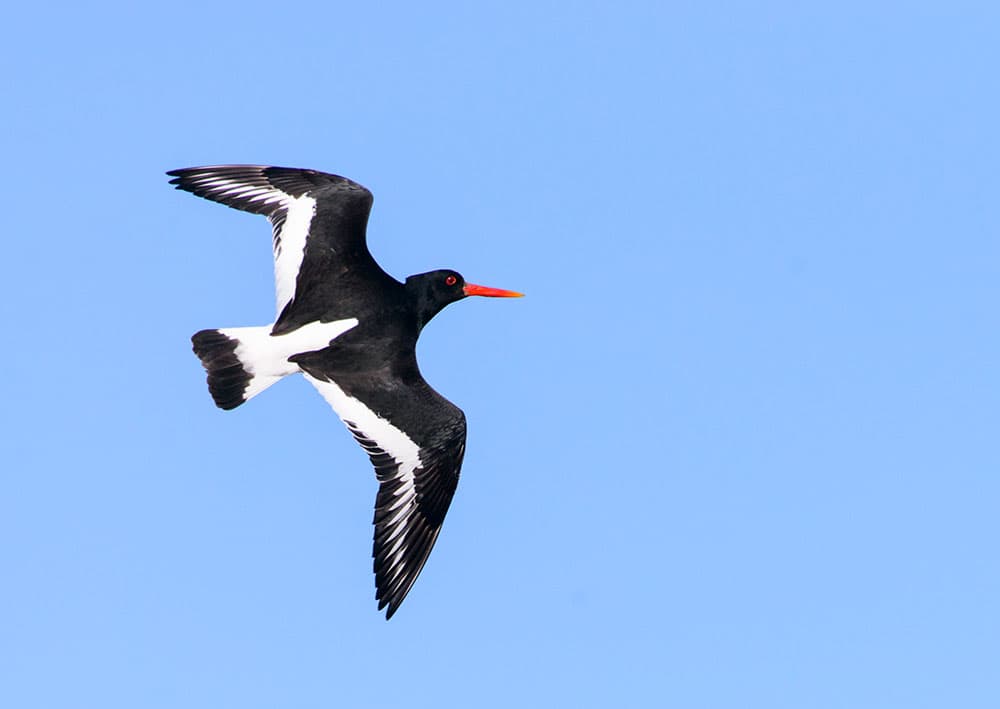About the waders
The main distinctive feature of waders is a long narrow beak
- Location Waders can be found all around the coast. Many species, such as godwit and knot, congregate in areas where they will spend the winter. Others, such as wood sandpipers, whimbrels and some breeding populations of dunlin, pass through en route to wintering grounds in the southern hemisphere.
- Size Range from little stints (sparrow sized) to much larger birds such as godwits and oystercatchers (up to 50cm long).
- Breeding ground Many of these species breed in northern latitudes, in areas such as Greenland, Iceland and Scandinavia.
- Diet Mainly consists of invertebrates such as molluscs, crustaceans and worms picked up from mud or shallow waters.
- Population Dunlins are the most common small wader found along the coast. There are 8,600-10,600 breeding pairs in the UK and 360,000 birds present during winter.

Many knots use UK estuaries as feeding grounds, both on migration and in winter
Late summer and early autumn brings with it large movements of wading birds. They travel south from their breeding grounds in areas such as Iceland and Greenland to wintering areas located around the UK coastline. You can easily see up to 20 species on the same area of mudflats or coastal scrape, which gives plenty of opportunities for varied photography. Another benefit of shooting at this time of year, rather than later in the winter, is that some individuals will still be in their summer plumage, meaning that godwits will be a rusty orange colour rather than the rather more drab grey-brown.
Habitat
There are many spots to find waders in autumn. If you have coastal mudflats or wetlands near you, waders are likely to make their way there, as these are important feeding grounds. Many can also be found at the scrapes (shallow depressions) that have been artificially created at places such as the RSPB reserves at Minsmere, Titchwell Marsh and Frampton Marsh. Have a look at your local bird club’s website for latest sightings of what is around.
Best time to shoot
Shoot early or late in the day as activity is often higher, and the light quality is much better due to the lower angle of the sun. However, other wading birds respond to tides rather than night or day, so the best time starts about two hours before a high tide.
Shooting advice

The ringed plover can be seen all year round
Get down low
Get as low to the ground as possible. This isn’t always possible, particularly when using public hides, but on beaches it is worth the effort. The resulting images are much more intimate, and a lower angle gives diffuse foregrounds and backgrounds, placing more emphasis on your subject. Getting close enough to the birds can be difficult, particularly when you are in open environments such as beaches.
However, you can use the changing tide to your advantage. As it comes in, the birds will be forced up the beach, so if you position yourself early and wait patiently, the birds will be forced to feed closer and closer to you. Just make sure you move before you get too wet! Similarly, species such as sanderlings work their way along the waterline. So by watching which way they are moving and getting ahead of them, you can position yourself so they run right past you.
Image variety
There’s plenty of variety on offer – from individual birds carrying out certain behaviours such as feeding and preening, to groups feeding together, or the spectacular flocks that build up at high tide at several coastal locations. These moments offer a huge range of possibilities, and they can end up being a pretty manic period of shooting to capture what’s happening before it all ends.
Settings
I use single spot autofocus to minimise the risk of missing the focus. It is no surprise that birds are constantly moving, so continuous autofocus is essential and your camera’s fastest frame rate will help capture the ideal pose. Also remember that shooting early or late in the day will minimise the risk of losing detail in highlights and shadows in the harsh midday sun.

In winter you can see large numbers of oystercatchers on major estuaries
Oscar Dewhurst
Oscar is an award-winning wildlife photographer. He has spent the past few years dedicating countless hours to photographing bitterns, and photographs many other species, from urban foxes to primates in the Peruvian Amazon. Visit www.oscardewhurst.com.
Kit list
Groundpod
More practical than using a tripod with the legs splayed out, this is essential for preventing sand getting everywhere. It makes life much easier when shooting from a low level on mudflats and beaches.
Binoculars
I never leave home without my Swarovskis. They are much lighter than a camera and clearer to look through.







